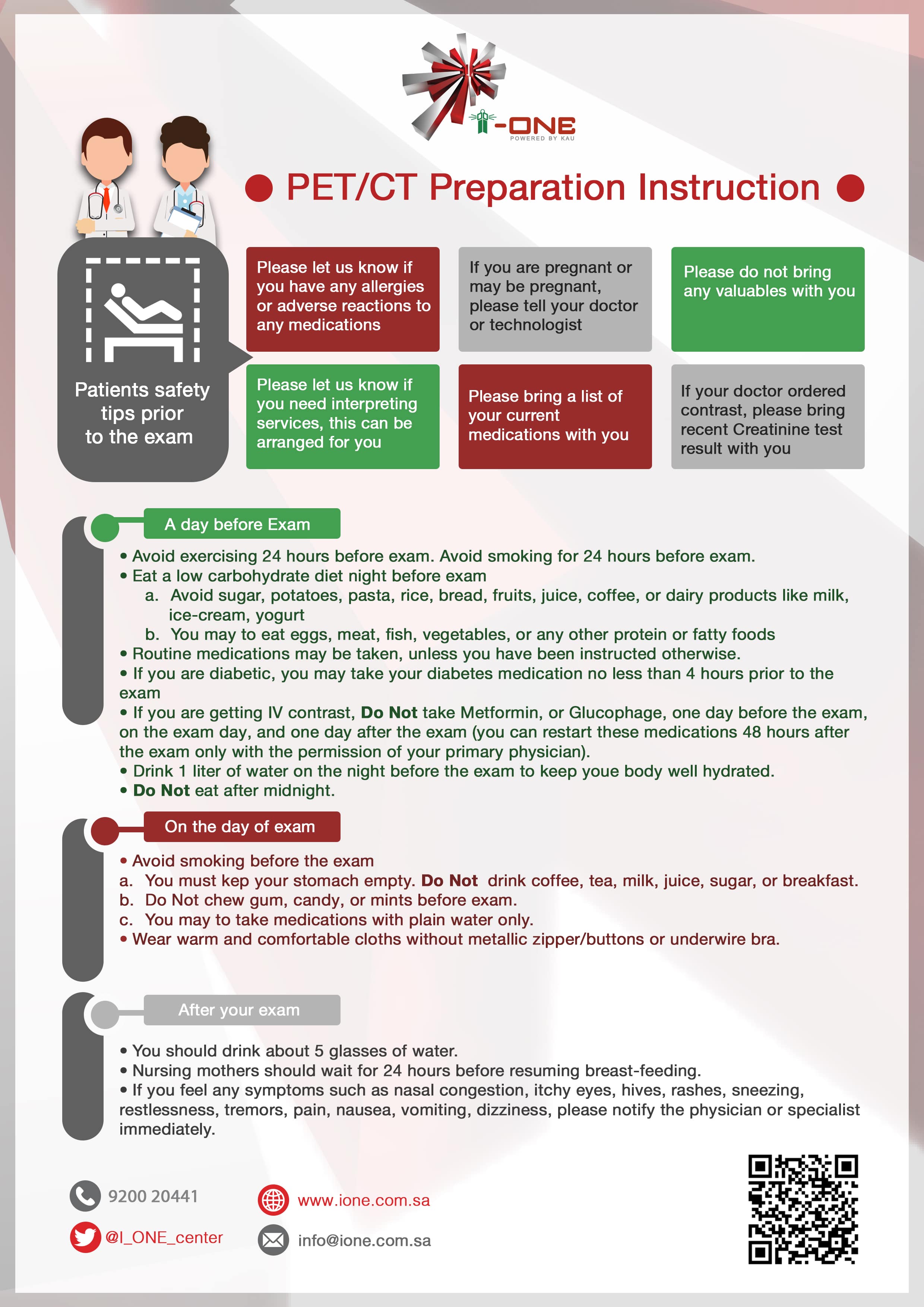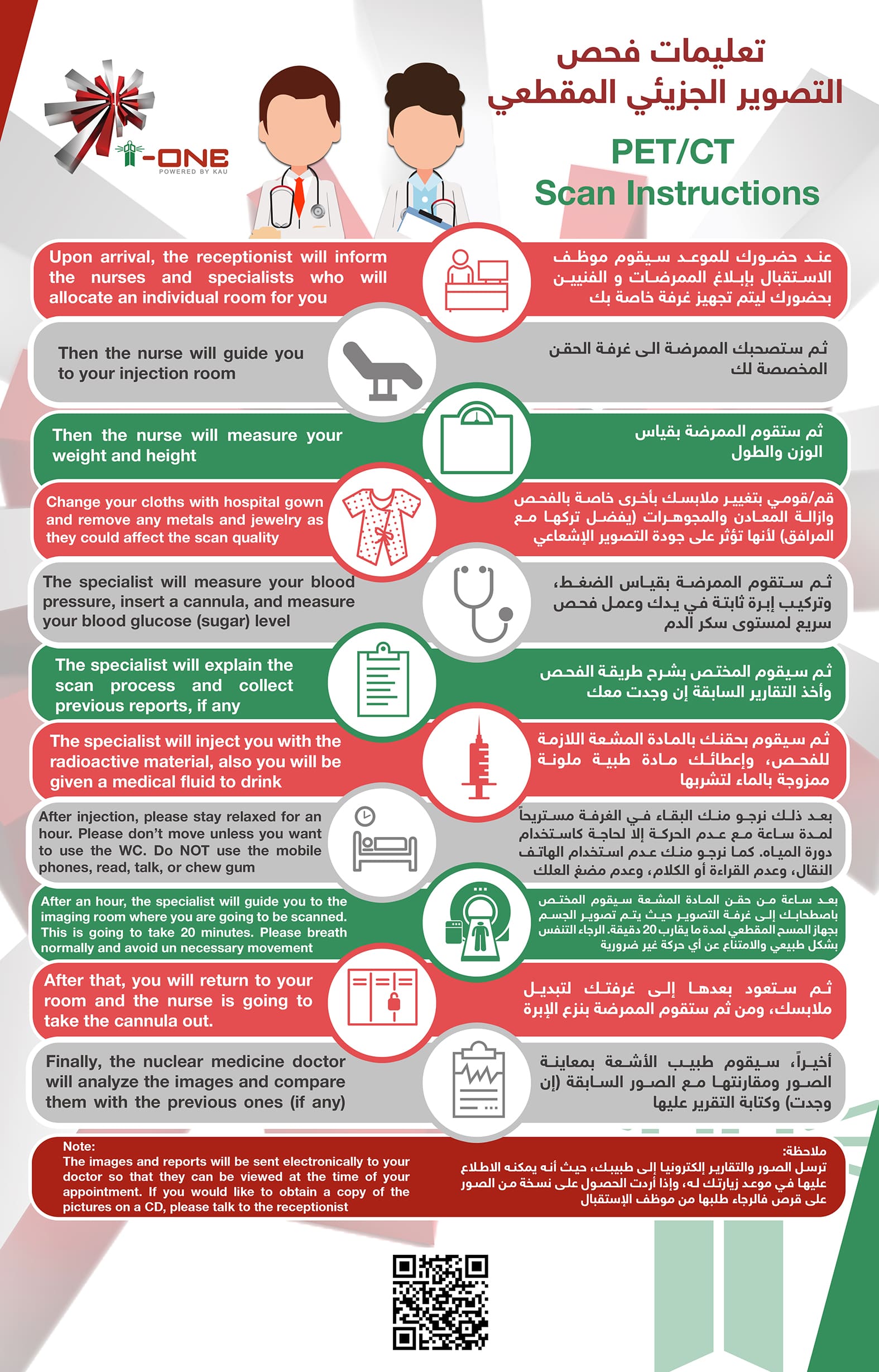FAQ
What is a PET/CT scan?
Positron Emission Tomography (PET) and Computed Tomography (CT) scans are both standard imaging tools that physicians use to pinpoint disease states in the body. A PET scan demonstrates how organs and tissues are functioning at a very early stage in a disease, often before structural changes take place. The CT scan provides information about the body's anatomy, such as size, shape and location. By combining these two scanning technologies, a PET/CT scan enables physicians to more accurately diagnose and identify cancer, heart disease and brain disorders
Why is my doctor recommending a PET or PET/CT scan?
A single PET or PET/CT exam can provide information that once would have required several medical studies and possibly surgery. PET scans are most often used to help the physician detect cancer and monitor response to treatment. PET scans are also used to evaluate heart disease and neurological conditions
What are the benefits?
PET scans provide the physician with valuable information. For cancer patients it may help specialists understand the extent of disease, guide the most effective therapy, and then help evaluate if the treatment is effective. PET scans aid in the diagnosis of heart disease and neurological diseases. This type of imaging may show changes much earlier than other imaging tests like CT or MRI.
What should I expect?
Upon arrival at the imaging center you will receive an injection of radiopharmaceutical, which will take approximately 60 minutes to distribute throughout your body. You will be asked to empty your bladder and then lie down on the scanner bed. The scan takes approximately 15-35 minutes, depending upon the type of scan you are having and the type of scanner being used. It is important that you lie still during this process. If you need pain medication, please bring it with you. You should plan on being at the imaging facility for approximately 2 to 3 hours.
What is a radiopharmaceutical?
Radiopharmaceuticals are used in a wide variety of Nuclear Medicine and PET exams to image and measure how the body functions. In PET imaging the most commonly used PET radiopharmaceutical is a radioactive form of glucose that allows doctors to image and measure how cells in the body use glucose for fuel. Different diseases increase or decrease the amount of glucose used.
What happens after my scan?
Once the PET scan is complete, you will be able to leave the imaging facility. Make sure you drink plenty of water or other fluids throughout the day to help flush the remaining radiopharmaceutical from your body.
What is a PET/CT scan?
Positron Emission Tomography (PET) and Computed Tomography (CT) scans are both standard imaging tools that physicians use to pinpoint disease states in the body. A PET scan demonstrates how organs and tissues are functioning at a very early stage in a disease, often before structural changes take place. The CT scan provides information about the body's anatomy, such as size, shape and location. By combining these two scanning technologies, a PET/CT scan enables physicians to more accurately diagnose and identify cancer, heart disease and brain disorders
Are there any potential side effects to a PET scan?
Ask the physician providing the scan to describe any potential side effects.
When will I get my results?
The PET scan is interpreted by a trained nuclear medicine physician or radiologist and results are usually sent to the referring physician within 24-48 hours. You should contact your doctor to discuss the results.
How often should I have a PET scan?
If you are under a physician's care, you should follow your physician's recommendations for frequency of PET scans.
Are there alternatives to PET?
PET scans offer unique information about an organ's function that can show a physician signs of disease.
Is a PET scan painless?
The only pain involved is the needle prick when you receive the radiopharmaceutical injection, which does not differ from any other type of injection.

 GE Healthcare provides transformational medical technologies and services to meet the demand for increased access, enhanced quality and more affordable healthcare around the world.
GE Healthcare provides transformational medical technologies and services to meet the demand for increased access, enhanced quality and more affordable healthcare around the world. 
 ITEL is one of the few companies in the world which is able to offer high-tech products and solutions based on the interaction of mechatronics, electromagnetic compatibility and radiations as well as complete turn-key Healthcare facilities such as Radiopharmaceutical Labs.
ITEL is one of the few companies in the world which is able to offer high-tech products and solutions based on the interaction of mechatronics, electromagnetic compatibility and radiations as well as complete turn-key Healthcare facilities such as Radiopharmaceutical Labs. 






